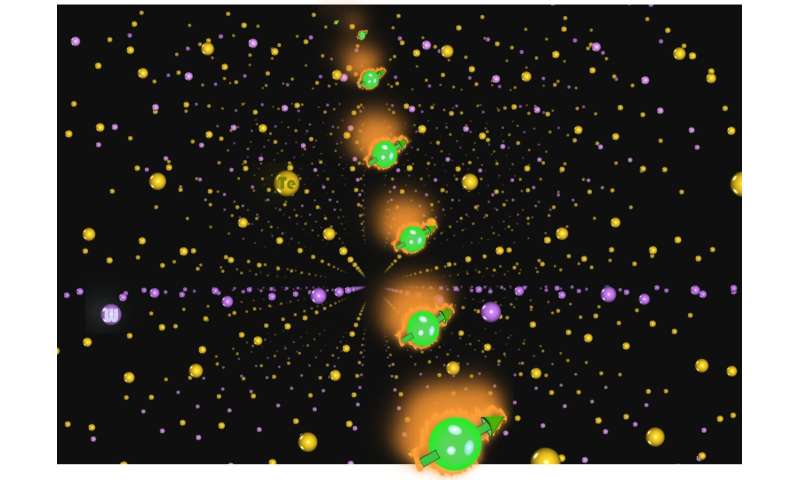A new spin on topological quantum material

Researchers at Chalmers University of Technology, Sweden, with collaborators in Germany and China, have discovered a new spin polarization in Tungsten di-telluride (WTe2), a topological Weyl semimetal candidate. These experimental findings can pave the way for the use of spin currents in developing the next generation of faster and more energy-efficient spintronic and quantum technologies. The results were recently published in the journal Advanced Materials.
Topological quantum materials have attracted significant attention in condensed matter physics and information technology because of their unique band structure with topologically protected electronic states. After the realization of graphene and topological insulators, researchers recently discovered Weyl semimetals with topological electronic properties. In contrast to the Schrödinger equation used to describe the electronic behavior in conventional materials and the Dirac equation for graphene and surface states of topological insulators, in Weyl semimetals, they follow the Weyl principles, proposed by Herman Weyl in 1929.
In these Weyl semimetals, the conduction and valence bands cross at specific points in momentum space, known as Weyl nodes. These nodes are topologically secured with opposite chirality in bulk with linear band dispersions. Notable is the presence of nontrivial surface states that connect the projections of Weyl nodes on the surface, called Fermi-arc. It has been shown that such a Weyl semimetal candidate WTe2 hosts unique electronic transport phenomena such as chiral anomaly, unconventional quantum oscillations, colossal magnetoresistance, spin Hall effect, and quantum spin Hall states, which opens a new era for physics experiments.
In a recent experiment, researchers at Chalmers detected an unconventional spin current in Weyl semimetal WTe2 that is parallel to the applied electric field. The generated spin polarization in WTe2 is found to be different from the already known conventional spin-Hall and Rashba-Edelstein effects.
"Such a new spin-polarization component can be possible due to its broken crystal symmetry combined with large Berry curvature, spin-orbit interaction, and novel spin-texture of WTe2," explains Associate Professor Saroj Prasad Dash, who leads the research group at the Quantum Device Physics Laboratory (QDP), the Department of Microtechnology and Nanoscience—MC2, Chalmers University of Technology.
The spin polarization in WTe2 is electrically detected by using both direct and its inverse phenomenon, obeying Onsager reciprocity relation. A robust and practical method for electrical creation and detection of spin polarization is demonstrated and utilized for efficient spin injection and detection in a graphene channel up to room temperature.
"These findings open opportunities for utilizing topological Weyl materials as non-magnetic spin sources in all-electrical 2-D spintronics", states Bing Zhao, researcher at QDP, and the first author of the paper.
He continues:
"Moreover, the findings have great potential for utilizing topological semimetals in spintronic circuits and quantum technologies. The electrical creation and detection of spin polarization in topological Weyl semimetal can be useful for switching magnetization of ferromagnets for its use in the spin-orbit torque effect in spintronic memory and logic technologies. Furthermore, such layered topological semimetal can be combined with superconductors and ferromagnets to use in topological quantum technologies".
The devices were nanofabricated in the state-of-the-art cleanroom facility at MC2, and measured at the Quantum Device Physics Laboratory. Theoretical calculations were performed in collaboration with Max Planck Institute of Microstructure Physics, Halle, Germany, and University of Science and Technology Beijing, China.
The Chalmers researchers acknowledge financial support from the European Union Graphene Flagship, Swedish Research Council, VINNOVA 2-D Tech center, and AoA Materials and EI Nano program at Chalmers University of Technology.
More information:
Unconventional Charge–Spin Conversion in Weyl‐Semimetal WTe2, Bing Zhao, Bogdan Karpiak, Dmitrii Khokhriakov, Annika Johansson, Anamul Md Hoque, Xiaoguang Xu, Yong Jiang, Ingrid Mertig, Saroj P. Dash; Advanced Materials, 2000818 (2020). doi.org/10.1002/adma.202000818
Provided by Chalmers University of Technology